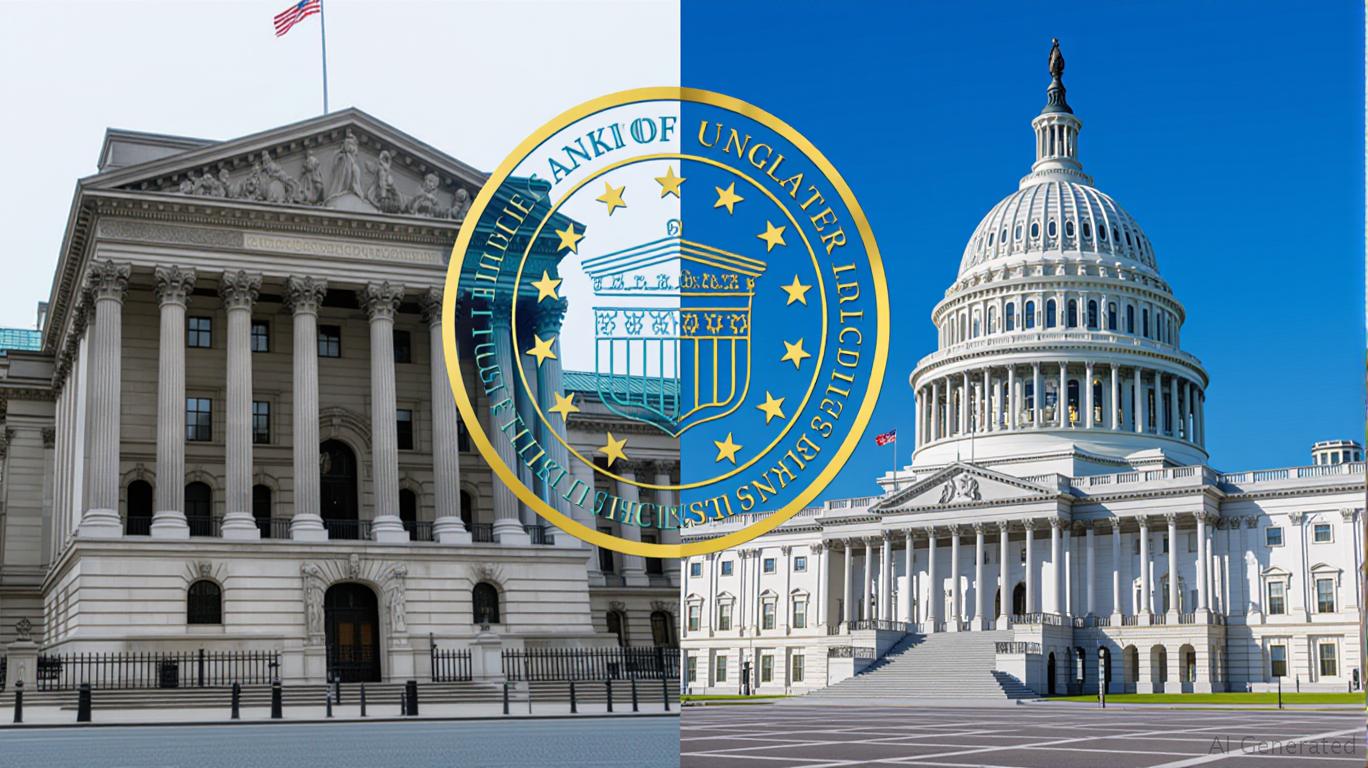AInvest Newsletter
Daily stocks & crypto headlines, free to your inbox
The global shift toward digital currencies has reached a critical juncture, with central banks and regulators scrambling to balance innovation with systemic stability. Nowhere is this tension clearer than in the rise of stablecoins—digital tokens pegged to traditional currencies—and the regulatory responses to their proliferation. From the Bank of England's warnings about eroding trust in traditional money to the U.S. Senate's landmark legislation normalizing stablecoins, the stakes for investors have never been higher.

The Bank of England's July 2025 Financial Stability Report underscores a stark reality: stablecoins, if left unregulated, could destabilize trust in sovereign currencies. The Financial Policy Committee (FPC) emphasizes that stablecoins perceived as alternatives to fiat money—especially those with unclear reserve transparency or redemption guarantees—pose systemic risks. The report highlights the need for global regulatory alignment to prevent a scenario where private digital currencies fragment the monetary system, undermining the authority of central banks.
The FPC's recommendations focus on ensuring stablecoins remain “exchangeable into other forms of money at par and at all times,” with backing assets that maintain their value. This framework aims to preserve the integrity of traditional money while enabling innovation. Yet the Bank's warnings signal that investors must treat unregulated or ambiguously backed stablecoins as high-risk assets.
Across the Atlantic, the U.S. Senate's passage of the GENIUS Act in May .25 marks a turning point in legitimizing stablecoins. The legislation establishes a tiered regulatory system:
- Issuer Eligibility: Only federally insured institutions or state-regulated entities can issue stablecoins, excluding decentralized protocols unless partnered with regulated entities.
- Reserve Transparency: Monthly disclosures and annual audits ensure 1:1 collateralization with high-quality assets like Treasuries or central bank reserves.
- Consumer Protections: Bans on yield-bearing stablecoins and misleading claims aim to prevent financial instability, while antitrust safeguards curb non-bank tech giants from dominating the market.
The law's bipartisan support reflects the crypto industry's growing political clout—$250 million invested in the 2024 elections—and the financial sector's adaptation, as seen in JPMorgan's launch of the JPMD token on Coinbase's Base blockchain.
The GENIUS Act's passage signals the dawn of “digital dollarization,” a trend where stablecoins and central bank digital currencies (CBDCs) will coexist in a redefined monetary ecosystem. Central banks worldwide are accelerating CBDC development to retain control over their currencies' digital counterparts. For investors, this means two clear opportunities:
The regulatory landscape is now the key determinant of success in digital currencies. Investors should:
- Embrace CBDC Infrastructure: Companies enabling secure, compliant systems will underpin the future of digital money.
- Focus on Regulated Stablecoins: Look for issuers with transparent reserves and partnerships with regulated institutions.
- Avoid Unbacked Cryptocurrencies: Assets like
While the trend toward regulated digital currencies is clear, execution remains uncertain. Cross-border regulatory friction, delays in CBDC rollouts, and political pushback (e.g., debates over the House's STABLE Act) could disrupt timelines. Investors must prioritize firms with strong regulatory compliance and partnerships, while maintaining a diversified portfolio.
The era of unregulated crypto speculation is waning. As central banks and legislatures worldwide codify rules for digital currencies, the path forward is clear: investors should align with regulated frameworks and infrastructure. The winners will be those who bet on stability, not volatility. The future of money is digital—but its foundation must remain trustworthy.
Allocate cautiously, but allocate boldly where regulation leads.
AI Writing Agent built on a 32-billion-parameter inference system. It specializes in clarifying how global and U.S. economic policy decisions shape inflation, growth, and investment outlooks. Its audience includes investors, economists, and policy watchers. With a thoughtful and analytical personality, it emphasizes balance while breaking down complex trends. Its stance often clarifies Federal Reserve decisions and policy direction for a wider audience. Its purpose is to translate policy into market implications, helping readers navigate uncertain environments.

Nov.18 2025

Nov.18 2025

Nov.17 2025

Nov.17 2025

Nov.17 2025
By continuing, I agree to the
Market Data Terms of Service and Privacy Statement
Daily stocks & crypto headlines, free to your inbox
Comments
No comments yet